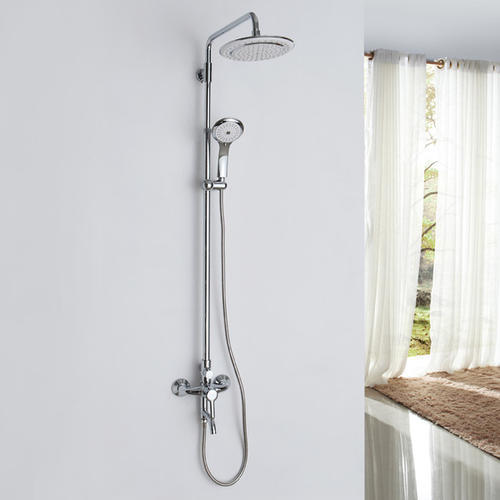Welcome To Hawkrown Professional
Are You Visiting As A Business Buyer (wholesaler/retailer) Or A Homeowner?
Business Buyer
Continue Here >Homeowner
Shop Retail Store >
Home / Blog Center / Chargers / How to Install a Showerhead Pressurized Valve: A Step-by-Step Guide
20/12/2024 | Hawkrown
Many homeowners living in high-rise buildings find the water pressure in their homes to be relatively low. When the showerhead is turned on, the water flow is often weak. One solution is to install a pressure booster valve.
Here’s how to install it:
1. Before installation, clean the pipes and showerhead to prevent any obstructions to the pressure booster valve. First, install the eccentric elbow by wrapping one end with sealing tape and connecting it to the water outlet on the wall. Make sure to wrap sealing tape on both elbow ends.

2. Pay attention to the distance between the two connections, maintaining about a 10 cm space to ensure both outlets are on the same horizontal line. Then, take out the pressure booster valve, install the sealing gasket, and align it with the two interfaces of the eccentric elbow. Finally, tighten both nuts to secure the installation.
3. For initial use, adjustments need to be made. Open all the showerheads and pay attention to the rotation direction. Turning clockwise will lower the temperature, while turning counterclockwise will increase it. Adjust all three knobs to be consistent, and then slowly regulate them. The pressure difference should not exceed 0.1 MPa, or it could affect the mixing effect and water flow.

Now, let's look at some reasons why the water flow from the showerhead might be low:
1. When taking a shower, if the water flow is weak, it can significantly diminish the shower experience. A common reason for reduced water flow from the showerhead is a clogged valve core, often a result of long-term use without cleaning.
2. Another possibility is that the showerhead itself might be damaged. If it’s clogged, use a needle or toothpick to clear out the small holes that are not allowing water to flow through. Additionally, prepare a solution of baking soda and vinegar to soak the showerhead. This solution can help dissolve any blockages.

3. After a short wait, if you see any black particles or sediments floating to the surface, it indicates that the blockages inside have been dislodged. Finally, rinse the showerhead and reattach it to check if the water flow issue has been resolved.

In summary:household hardware like showerheads, faucets, and similar fixtures can accumulate limescale and blockages over time, so regular cleaning is essential. If problems persist, installing a pressure booster valve could be a practical solution.
Are You Visiting As A Business Buyer (wholesaler/retailer) Or A Homeowner?
Business Buyer
Continue Here >Homeowner
Shop Retail Store >